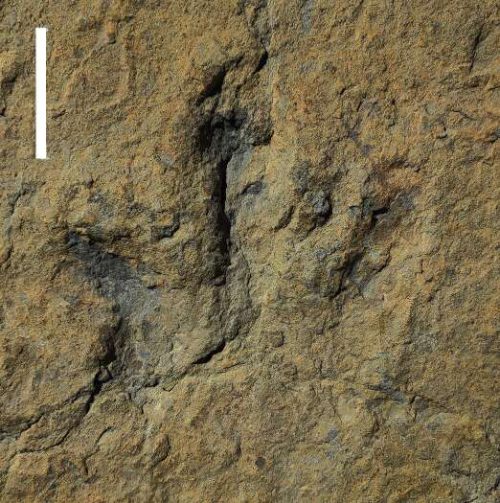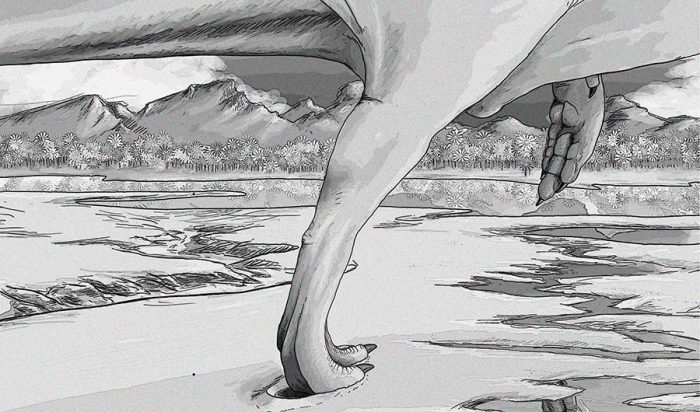When thinking about meat-eating dinosaurs, one thought is, "Just how fast were they? Could we outrun them? Or at least use a head start to get to safer ground?"
Well, according to a new study, they were pretty fast. Unless you're Usain Bolt or Andre DeGrasse, even keeping up with these animals would have been next to impossible.
A group of Spanish paleontologists analyzed several sets of fossilized footprints left by theropod dinosaurs—these are the three-toed, two-legged running meat-eaters that include raptors and tyrannosaurs. They found that one set of tracks hit 37 km/h (23 mph), while a second group was left behind by an animal racing at 45 km/h (28 mph).
In other words, just fast enough to get a speeding ticket in a residential neighbourhood. Though, really, what police officer is going to give a ticket to a theropod! ("No, my mistake! Have a nice day, Mr. Raptor!")
Muddy evidence

One of the footprints. The white bar represents 10 centimetres in length for size comparison. (Pablo Navarro-Lorbés)
So here's a reasonable question that you might be pondering reading all of this. How can scientists look at a set of tracks and establish how fast an animal was moving?
It's all about using a complex equation that factors in the animal estimated height at the hip and the length of their stride. When any animal runs, our stride—and therefore, the footprints that we leave behind—change based on how fast we are moving. Once you understand how big an animal is, you can then estimate pretty accurately how quickly that creature was traveling to leave behind the tracks that it did.
In the case of the two sets of tracks found in La Rioja, Spain, researchers were able to use the size and shape of the footprints estimate the size of the animals that made them. Though they can't guess exact species, the theropods were about 1.3 metres (4 to 5 feet) high at the hip, making them 2 metres (7 feet) tall and around 4 to 5 metres (13 to 16 feet) long. That's a pretty substantial dinosaur!
We're fortunate that these two creatures just happened to be running on a muddy beach back in the Cretaceous Period at such a moment as to have their tracks survive. What amazing artifacts!
 On the move! This drawing imagines a theropod running across an ancient beach. (Pablo Navarro-Lorbés)
On the move! This drawing imagines a theropod running across an ancient beach. (Pablo Navarro-Lorbés)









